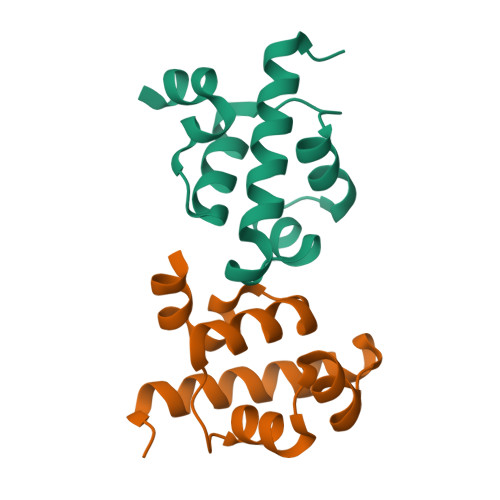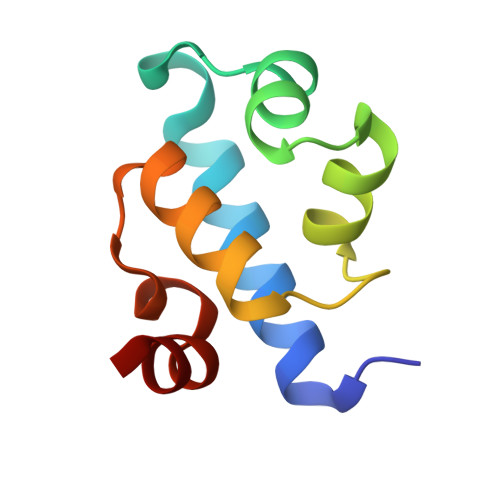A survey of lambda repressor fragments from two-state to downhill folding.
Liu, F., Gao, Y.G., Gruebele, M.(2010) J Mol Biology 397: 789-798
- PubMed: 20138892
- DOI: https://doi.org/10.1016/j.jmb.2010.01.071
- Primary Citation of Related Structures:
3KZ3 - PubMed Abstract:
We survey the two-state to downhill folding transition by examining 20 lambda(6-85)* mutants that cover a wide range of stabilities and folding rates. We investigated four new lambda(6-85)* mutants designed to fold especially rapidly. Two were engineered using the core remodeling of Lim and Sauer, and two were engineered using Ferreiro et al.'s frustratometer. These proteins have probe-dependent melting temperatures as high as 80 degrees C and exhibit a fast molecular phase with the characteristic temperature dependence of the amplitude expected for downhill folding. The survey reveals a correlation between melting temperature and downhill folding previously observed for the beta-sheet protein WW domain. A simple model explains this correlation and predicts the melting temperature at which downhill folding becomes possible. An X-ray crystal structure with a 1.64-A resolution of a fast-folding mutant fragment shows regions of enhanced rigidity compared to the full wild-type protein.
Organizational Affiliation:
Center for Biophysics and Computational Biology, University of Illinois, Urbana, IL 61801, USA.


















